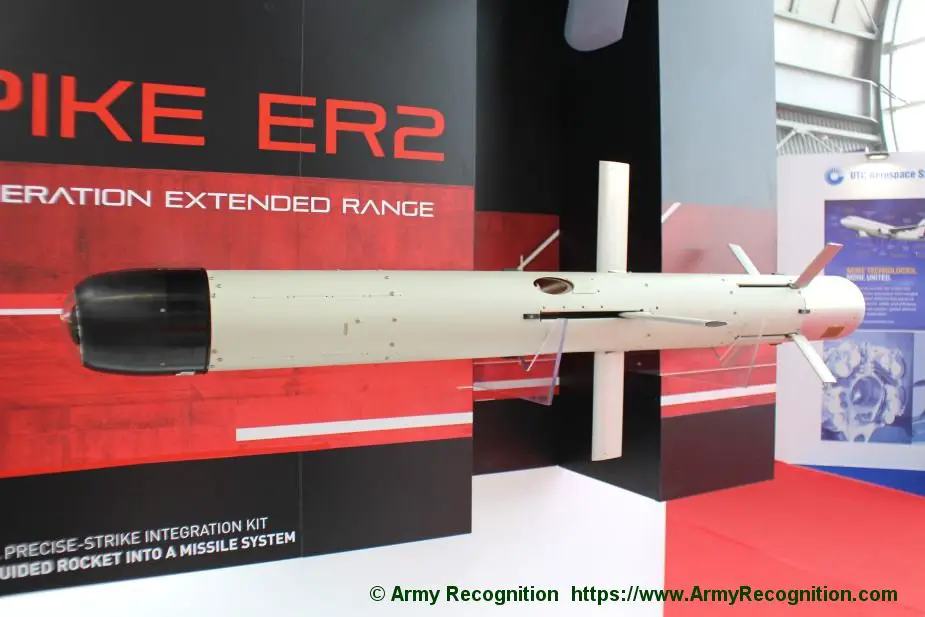Breaking news
India to conduct validation tests of Rafael Spike antitank guided missile.
Sometime in the summer of 2019, the Indian Army will conduct validation trials of the Israeli-made Rafael Advanced Defense Systems Spike anti-tank guided missile (ATGM) in the Rajasthan desert. New Delhi will then decide whether to procure the weapon systems as a “stopgap” measure before India can field its own indigenous ATGM system.

Rafael Spike ER2 (Extended Range) antitank guided missile (Picture source: Army Recognition)
The tests will specifically focus on validating the Spike’s infrared seeker which had reportedly not met the Indian Army’s operational qualitative requirements in previous trials undertaken in searing summer temperatures in the desert where a large proportion of the systems would eventually be deployed. Following the successful completion of validation trials and the subsequent approval of the purchase by the Indian government, delivery of the first batch of Spike ATGM could begin in late 2019 or 2020, depending on the conclusion of a final inter-governmental agreement between India and Israel in the summer of 2019.
The Spike is a fire-and-forget missile with lock-on before launch and automatic self-guidance. The missile is equipped with an imaging infrared seeker. The medium, long and extended range versions of the Spike also have the capability of "Fire, Observe and Update" operating mode. The missile is connected by a fiber-optical wire that is spooled out between the launch position and the missile. With this, the operator can obtain a target if it is not in the line of sight of the operator at launch, switch targets in flight, or compensate for the movement of the target if the missile is not tracking the target for some reason. Hence, the missile can be fired speculatively for a target of opportunity, or to provide observation on the other side of an obstacle. The missile has a soft launch capability – the motor firing after the missile has left the launcher – that allows for the missile to be fired from confined spaces, which is a necessity in urban warfare.
The missile uses a tandem warhead – two shaped charges, a precursor warhead to detonate any explosive reactive armor and a primary warhead to penetrate the underlying armor. Currently, it is replacing aging second generation anti-tank missiles like the MILAN and M47 Dragon in the armies of the user nations. The Spike system is made up of the launching tripod with its fire control unit and the missile. There is no dedicated thermal sight on the launcher – the missile's imaging seeker is used. Altogether, the long-range variant of the system weighs around 26 kg (57 lb).
The Spike can be operated from the launcher by infantry, or from mounts that can be fitted to vehicles such as fast attack vehicles, armored personnel carriers or utility vehicles. Vehicles that are not normally fitted with anti-tank weapons can therefore be given anti-tank capability. The missile has been tested as a weapon system for the SAGEM Sperwer unmanned aerial vehicle. The Spanish army has fitted the Spike-ER to its Eurocopter Tiger attack helicopters. Both Israel and the United States have experimented with arming Black Hawk helicopters with the Spike missile; the US variant is used in UH-60M Battlehawk helicopters.


























